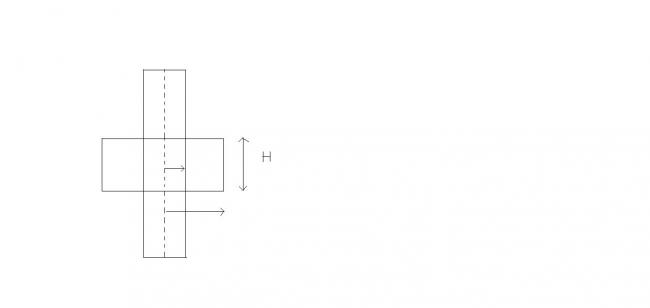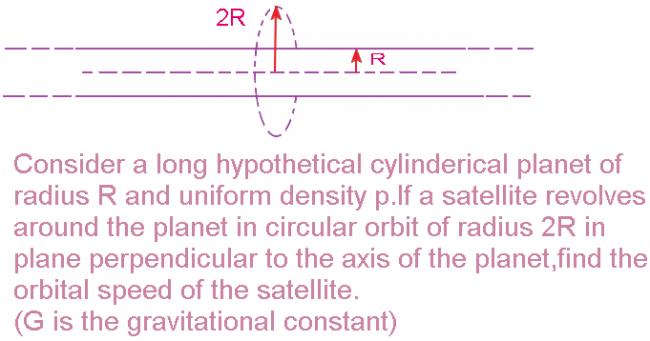Let us consider the gravitational field strength of this hypothetical planet as " g " .
Then , according to Gauss ' s Law : -
∫ g . dS = - 4 π G Menclosed
Now imagine a Gaussian cylinder of height " H " enclosing a portion of the planet as shown in the figure .
Obviously , the mass enclosed in this imaginary cylinder , Menclosed = Ï . ( Ï€ R 2 H ) .
The surface area of the imaginary cylinder , S = 2 π . ( 2 R ) H = 4 π R H .
Since , " g " in this case is cylindrically symmetrical , hence , we can take this factor out of the integration to obtain : -
g . S . cos ( 180 ° ) = - 4 π G Menclosed
Or , g S = 4 π G Menclosed
Or , g . 4 Ï€ R h = 4 Ï€ G Ï ( Ï€ R 2 H )
Or , g = G Ï Ï€ R
Now , if we let the mass of the satellite be " M " , the orbital velocity being " V " , then : -
M V 22 R = g . M = G M Ï€ Ï R
Or , V = R √ 2 G Ï€ Ï .
